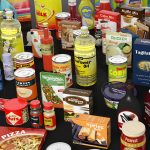
What ‘chemicals of concern’ are in your food packaging?
Hazardous chemicals that persist indefinitely in the ecosystem have no place in a circular economy. Brand owners using packaging materials that contain per- and polyfluoroalkyl (PFAS), for example, should look for better replacements to ensure the health and safety of consumers and the environment.
By Elizabeth Ritch
Per- and polyfluoroalkyl substances (PFAS) have gotten a lot of criticism recently from environmental groups and the media. Do you know what they are, and whether they’re in the packaging of the products you sell?
PFAS are a large family of chemicals that share a similar structure—they are all based on a backbone of carbon and fluorine bonds, which are stable and persistent in the environment. These chemicals have been widely used for commercial and industrial applications, including water-, oil- and stain-repellent fabrics, nonstick products and fire-fighting foams.
PFAS are also widely used in food packaging, where they provide water and grease resistance. A 2017 study found widespread use of fluorinated chemicals in dessert and bread wrappers, sandwich and burger wrappers, and paperboard food packaging, and the Center for Environmental Health found PFAS in 100% of the microwave popcorn bags and molded fiber food serviceware they tested.
Certain PFAS based on a chain of eight carbon atoms (such as perfluorooctanoic acid [PFOA] and perfluorooctanesulfonic acid [PFOS], also referred to as C8 chemicals) were widely used for decades and have been associated with high cholesterol, ulcerative colitis, thyroid disease, testicular cancer, kidney cancer, and pregnancy-induced hypertension and preeclampsia. These particular chemicals are no longer manufactured in the United States, following a phase-out initiative led by the Environmental Protection Agency (EPA). However, due to the strength and stability of the carbon-fluorine bond, they are highly persistent in the environment, so people are still exposed to them via drinking water and other sources.
Read more: What ‘chemicals of concern’ are in your food packaging?





